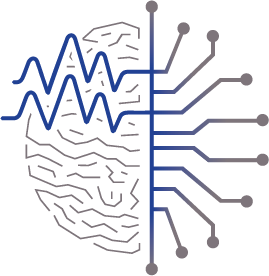General and specific TwinBrain objectives
The investigation of brain dynamics in most routine movements such as walking, balancing or learning new motor-cognitive tasks remains a major challenge for neuroscience. An integrative approach to investigating brain and movement dynamics was recently developed under the term MoBI: Mobile Brain/Body Imaging. This technique is based on mobile electroencephalography (EEG) synchronized to motion capture to better understand the relationship between brain dynamics, movement, and cognition in more realistic (everyday) environments. Development and optimization of this technique will provide new analytical methods for high-dimensional MoBI data in ecologically valid contexts, work with data that is not yet standard in the field of human neuroscience, and lead EEG research out of the laboratory environment into everyday situations, which become more challenging for the symptomatic population.
The overall objective of TwinBrain project is to improve the scientific and technological capacity of the country with low R&I performance (Slovenia) by twinning it with three leading international research institutions (from Germany, Switzerland, and Italy). Leading researchers in the field of neuro-muscular control, MoBI and the neuroscientific investigation of embodied cognitive processes as well as machine learning will form a network of excellence that will facilitate training and early-stage research growth through the exchange of best practices, workshops and summer schools. TwinBrain will also provide short term on-site trainings, expert visits and exchanges, as well as start working on future joint research proposals and PhD projects among partners and beyond to be continued after the completion of the project. These will lead to strengthening of long-term infrastructure capacities and facilitate the development of the proposed research area and related careers.
More information about experiments, workshops, summer schools, roundtables, staff exchanges and more to come. To stay up to date, follow us on TwinBrain social media.

